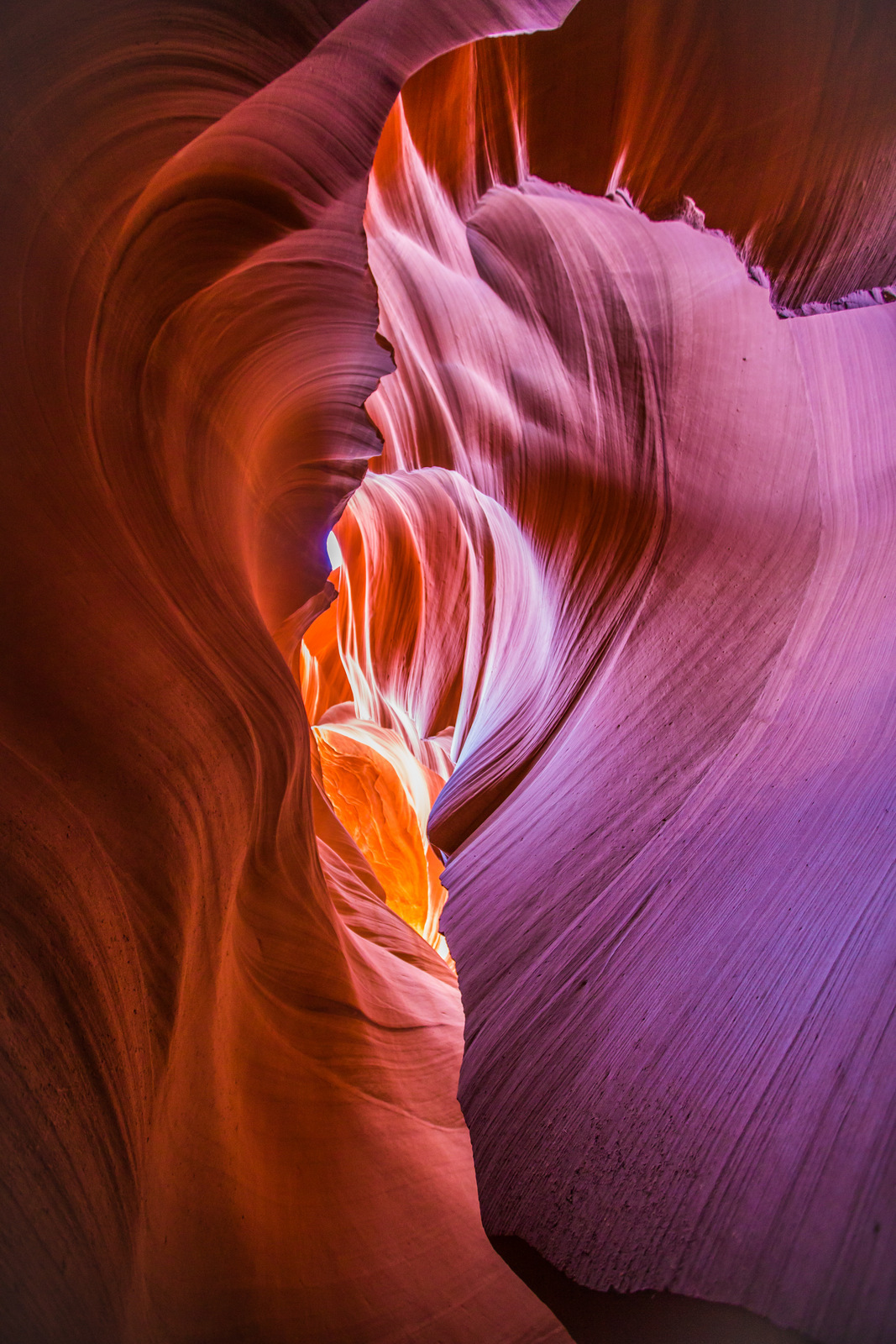
Antelope Canyons, Horseshoe Bend and Colorado River Tour
Antelope Canyon is a slot canyon in the American Southwest. It is located on Navajo land east of Page, Arizona. Antelope Canyon includes two separate, scenic slot canyon sections, referred to individually as “Upper Antelope Canyon” or “The Crack”; and “Antelope Canyon” or “The Corkscrew”.

This was one of our longest road trip. It took us 13 hours of nonstop driving to reach from Sunnyvale, California to Page, Arizona.
Watching the sun rose above these beautiful red formations made the long drive worth it.



Day 1: Antelope Lower & Upper Canyons
Antelope Canyon was formed by erosion of Navajo Sandstone, primarily due to flash flooding and secondarily due to other sub-aerial processes. Rainwater, especially during monsoon season, runs into the extensive basin above the slot canyon sections, picking up speed and sand as it rushes into the narrow passageways. Over time the passageways eroded away, making the corridors deeper and smoothing hard edges in such a way as to form characteristic ‘flowing’ shapes in the rock.
You can’t visit the canyons on your own. You need to book a tour. We visited Lower Antelope Canyon with Ken’s Tours – Lower Antelope Canyon and Uppe Antelope Canyon with Adventurous Antelope Canyon Photo Tour,
Antelope Lower Canyons
Lower Antelope Canyon, called Hazdistazí, or “spiral rock arches” by the Navajo Indians, are located a few miles away. Prior to the installation of metal stairways, visiting the canyon required climbing along pre-installed ladders in certain areas. Even following the installation of stairways, it is a more difficult hike than Upper Antelope. It is longer, narrower in spots, and even footing is not available in all areas. At the end, the climb out requires several flights of stairs.
Despite these limitations, Lower Antelope Canyon draws a considerable number of photographers, though casual sightseers are much less common there than in Upper.
The lower canyon is in the shape of a “V” and shallower than the Upper Antelope. Lighting is better in the early hours and late morning.







Upper Antelope Canyon
Upper Antelope Canyon is called Tsé bighánílíní, “the place where water runs through rocks” by the Navajo. It is the most frequently visited by tourists for two reasons. First, its entrance and entire length are at ground level, requiring no climbing. Second, beams (shafts of direct sunlight radiating down from openings in the top of the canyon) are much more common in Upper than in Lower. Beams occur most often in the summer months, as they require the sun to be high in the sky. Winter colors are a little more muted like the photo displayed here. Summer months provide two types of lighting. Light beams start to peek into the canyon March 20 and disappear October 7 each year.





Day 2: Horseshoe Bend and Colorado River Tour
Horseshoe Bend
Horseshoe Bend is a horseshoe-shaped incised meander of the Colorado River. The rock walls of Horseshoe Bend contain a variety of minerals, among which are hematite, platinum and garnet. We visited it during sunrise when it was freezing cold. Inspite of extreme temperature there was a fleet of photographers gathered to capture the sunrise over this magnificent art of nature.





Colorado River Discovery
Our last stop for the trip was rafting experience in the waters of Colorado River with Colorado River Discovery Tour.
As you float on one of the most dramatic stretches of river in the western United States, experienced guide will tell the story of the area’s soaring sandstone cliffs, crystal blue-green waters, abundant wildlife, exploration by Major John Wesley Powell and others, and the river’s modern role in the Southwest’s water and power delivery system.


















See all pictures from the trip on below link




































































































































WOW!! Stunning! Looks ;like it was an amazing trip 🙂
Thanks Pavi.. Indeed it was!
Hi, I found you blog accidently when looking for something completely irrelevant. Turns out we are planning the same trip and I was so glad to see this info. Can you please comment on if this trip was done in March? We were advised against doing it in March or April and hence my question.
Btw, your pics look fabulous, it is indeed a very beautiful place.
Thank you 🙂
This trip was done in November.